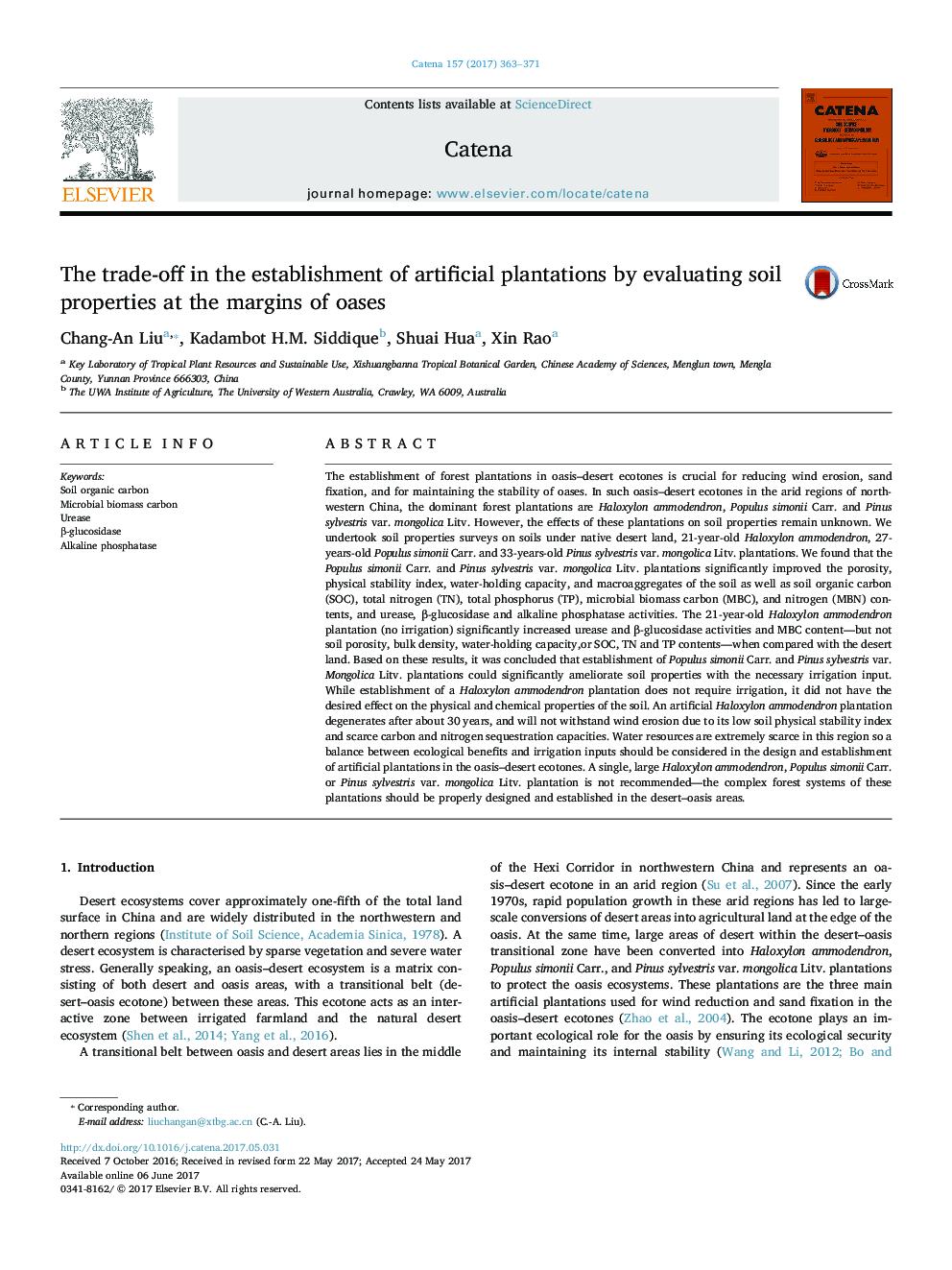| کد مقاله | کد نشریه | سال انتشار | مقاله انگلیسی | نسخه تمام متن |
|---|---|---|---|---|
| 5769873 | 1629197 | 2017 | 9 صفحه PDF | دانلود رایگان |

- Quantified soil properties in different plantations in an oasis-desert ecotone.
- Irrigated poplar and pine plantations ameliorated soil properties.
- Only the shrub plantation without irrigation amended the soil microbial environment.
- The shrub plantation will not withstand wind erosion once it degenerates.
- Complex forest systems of these plantations should be designed and established.
The establishment of forest plantations in oasis-desert ecotones is crucial for reducing wind erosion, sand fixation, and for maintaining the stability of oases. In such oasis-desert ecotones in the arid regions of northwestern China, the dominant forest plantations are Haloxylon ammodendron, Populus simonii Carr. and Pinus sylvestris var. mongolica Litv. However, the effects of these plantations on soil properties remain unknown. We undertook soil properties surveys on soils under native desert land, 21-year-old Haloxylon ammodendron, 27-years-old Populus simonii Carr. and 33-years-old Pinus sylvestris var. mongolica Litv. plantations. We found that the Populus simonii Carr. and Pinus sylvestris var. mongolica Litv. plantations significantly improved the porosity, physical stability index, water-holding capacity, and macroaggregates of the soil as well as soil organic carbon (SOC), total nitrogen (TN), total phosphorus (TP), microbial biomass carbon (MBC), and nitrogen (MBN) contents, and urease, β-glucosidase and alkaline phosphatase activities. The 21-year-old Haloxylon ammodendron plantation (no irrigation) significantly increased urease and β-glucosidase activities and MBC content-but not soil porosity, bulk density, water-holding capacity,or SOC, TN and TP contents-when compared with the desert land. Based on these results, it was concluded that establishment of Populus simonii Carr. and Pinus sylvestris var. Mongolica Litv. plantations could significantly ameliorate soil properties with the necessary irrigation input. While establishment of a Haloxylon ammodendron plantation does not require irrigation, it did not have the desired effect on the physical and chemical properties of the soil. An artificial Haloxylon ammodendron plantation degenerates after about 30 years, and will not withstand wind erosion due to its low soil physical stability index and scarce carbon and nitrogen sequestration capacities. Water resources are extremely scarce in this region so a balance between ecological benefits and irrigation inputs should be considered in the design and establishment of artificial plantations in the oasis-desert ecotones. A single, large Haloxylon ammodendron, Populus simonii Carr. or Pinus sylvestris var. mongolica Litv. plantation is not recommended-the complex forest systems of these plantations should be properly designed and established in the desert-oasis areas.
Water retention curves in different land use types in the 0-10Â cm soil layer. Desert land: native desert land; Shrub land: Haloxylon ammodendron plantation; Poplar land: Populus simonii Carr. plantation; Pine land: Pinus sylvestris var.mongolica Litv. plantation.93
Journal: CATENA - Volume 157, October 2017, Pages 363-371